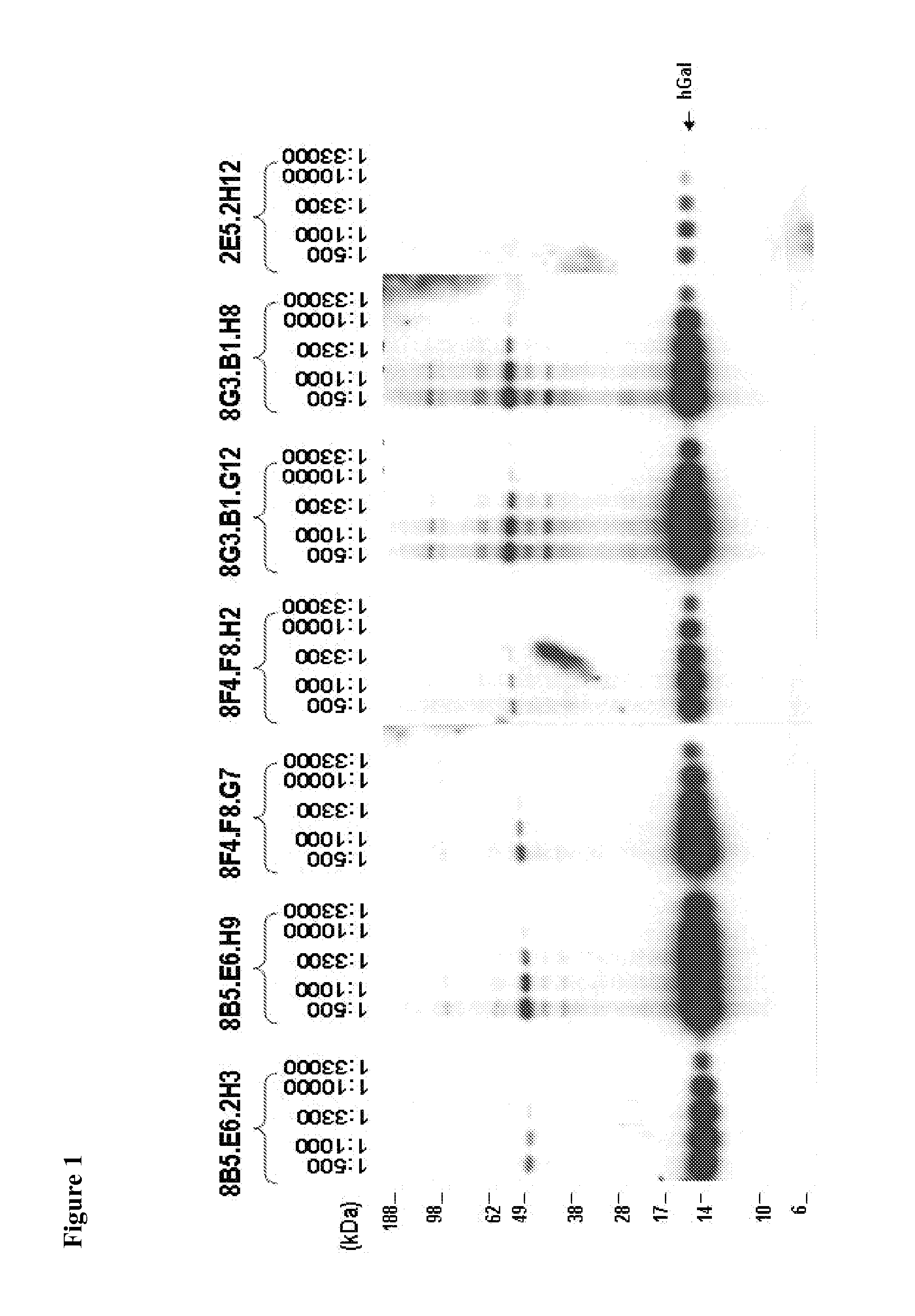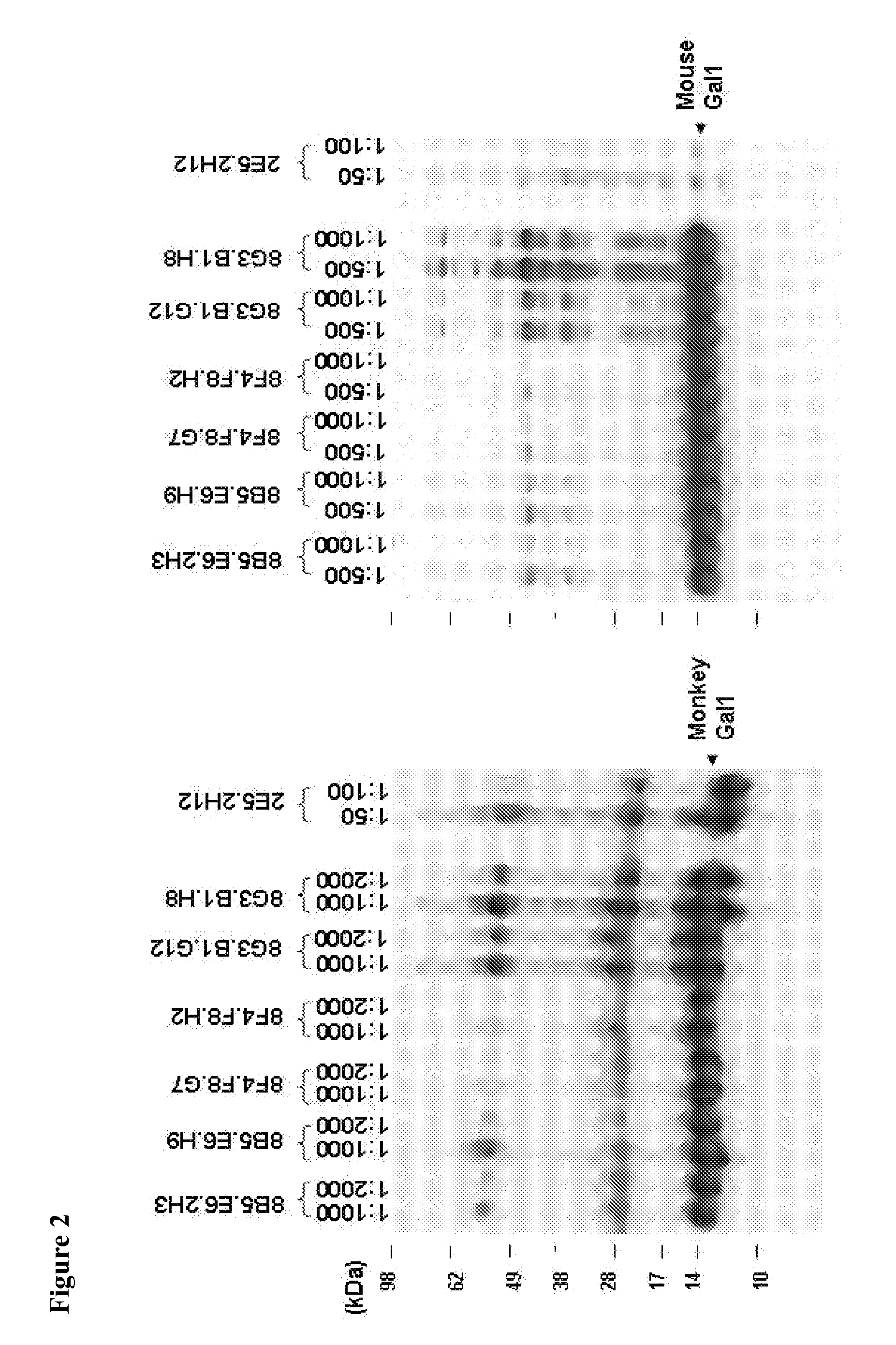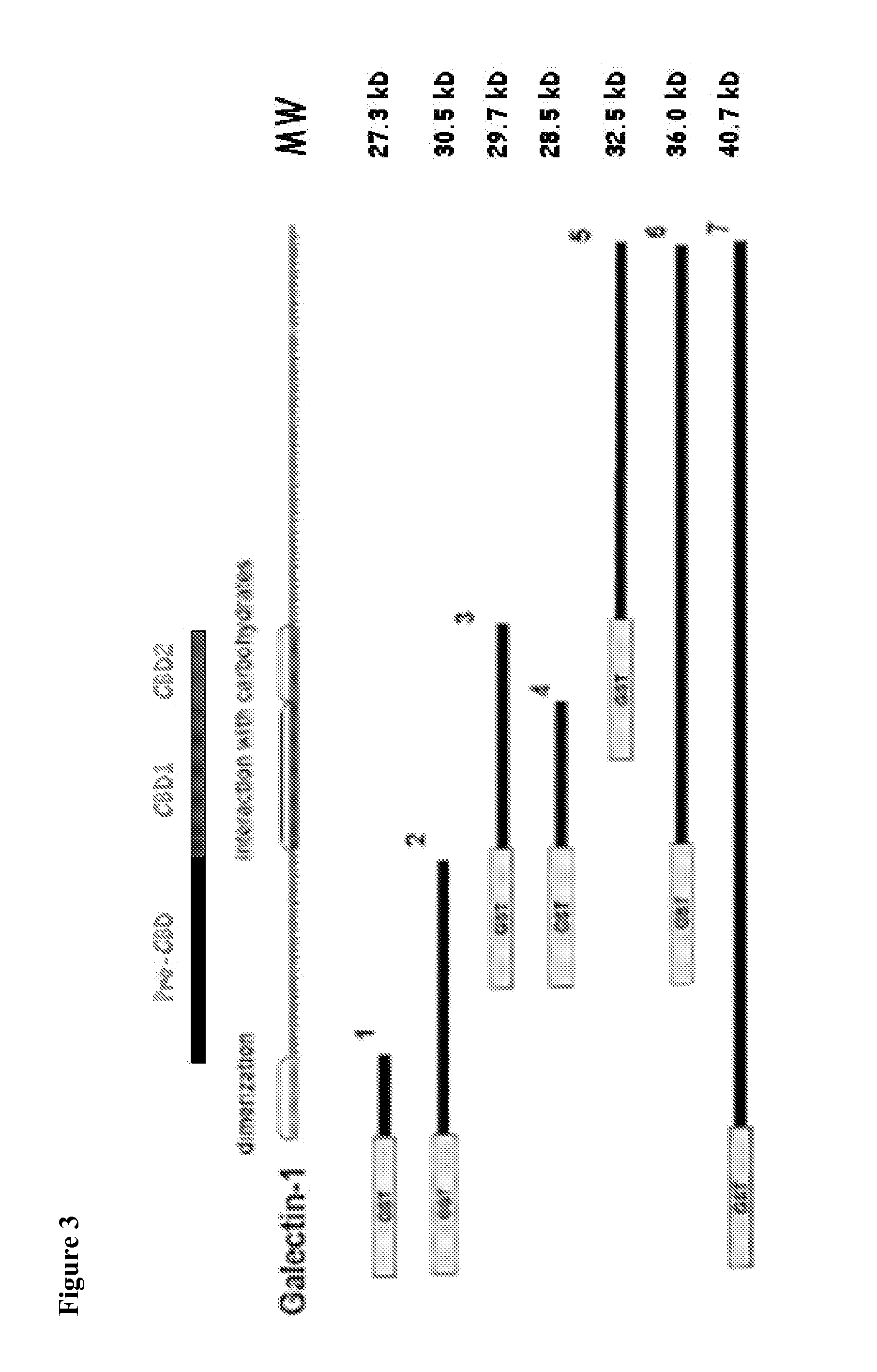Compositions, kits, and methods for the diagnosis, prognosis, monitoring, treatment and modulation of post-transplant lymphoproliferative disorders and hypoxia associated angiogenesis disorders using galectin-1
a technology of lymphoproliferative disorders and kits, applied in the field of kits, can solve the problems of increasing complication in the transplant subject, and inability to respond to the progression of the disease in patients, so as to reduce the risk of graft rejection, reduce the diameter of the vessel, and improve the effect of angiogenesis
- Summary
- Abstract
- Description
- Claims
- Application Information
AI Technical Summary
Benefits of technology
Problems solved by technology
Method used
Image
Examples
example 1
Anti-Gal1 Monoclonal Antibodies
[0384]Anti-Gal1 monoclonal antibodies were generated and reacted with human recombinant Gal1 and endogenous Gal1 in biochemical assays (FIG. 1) and in immunohistochemical analyses of primary tumors. In addition, several of the newly developed Gal1 monoclonal antibodies also cross-reacted well with endogenous Gal1 from cynomologous monkey and mouse (FIG. 2). Epitope mapping indicated that the 8B5, 8F4 and 8G3 Gal1 monoclonal antibodies all recognized a domain distal to the previously described carbohydrate-binding domain (FIGS. 3-4 and Table 1).
[0385]These antibodies (i.e., 8B5, 8F4, and 8G3) were subsequently sequenced and determined to each have the same sequence, with the light chain being lambda. Briefly, total RNA was extracted from each hybridoma and subjected to RT-PCR using constant region specific 3′ primers and pools of degenerate signal sequence specific 5′ primers. Amplified products were cloned and sequenced. For the heavy chain, a total of...
example 2
Materials and Methods for Examples 3-8
A. Cell Lines
[0388]The L428 cHL cell line (L428), the SU-DHL6 DLBCL cell line and thirteen EBV-transformed B-lymphoblastoid cell lines (LCLs) (NOR-, RIC-, STA-, FOL-, LOV-, MV-, WOL-, FW-, VS-, MA-, SC-, DS-, AND DW-LCL) were maintained in RPMI-1640 supplemented with 10% FBS (Cellgro Media Tech, Manassas, Va.), 2 mM glutamine, 50 u / ml penicillin and 50 u / ml streptomycin. The 293T cell line was purchased from ATCC and maintained in Dulbecco's Modified Eagle's Medium supplemented with 10% FBS.
B. Analysis of Gal1 Transcript Abundance by Gene Expression Profiling
[0389]Gene expression profiling data were obtained for two previously described data sets (Vockerodt et al. (2008) J Pathol (2008) 216:83-92; Basso et al. (2005) Nature Genetics 37:382-90) from the Gene Expression Omnibus (accession numbers GSE2350 and GSE10821) and individually normalized by robust multiarray preprocessing. Data from Basso et al. (Basso et al. (2005) Nature Genetics 37:382-...
example 3
Gal1 Expression in EBV-Transformed Lymphoblastoid Cell Lines and Primary Post-Transplant Lymphoproliferative Disorders (PTLDs)
[0400]Gal1 transcript abundance was characterized in EBV-transformed lymphoblastoid B-cell lines (LCLs), cell lines from additional B-cell malignancies including classical Hodgkin lymphoma (cHL), and additional normal B cells using publically available gene expression profiles (Basso et al. (2005) Nature Genetics 37:382-90). Gal1 transcripts were similarly abundant in EBV-transformed LCLs and cHL cell lines (FIG. 5). For these reasons, Gal1 protein expression was further assessed in a series of EBV-transformed LCLs using a recently developed anti-Gal1 monoclonal antibody, 8F4F8G7 (FIG. 6). All of the examined EBV-transformed LCLs expressed the ≈14 kd Gal1 protein as did the cHL cell line (FIG. 7A).
[0401]A series of primary EBV+PTLDs was next evaluated for Gal1 expression by immunohistochemical staining; 76% (13 / 17) of primary EBV+PTLDs were Gal1+ whereas only...
PUM
| Property | Measurement | Unit |
|---|---|---|
| concentrations | aaaaa | aaaaa |
| pH | aaaaa | aaaaa |
| Tm | aaaaa | aaaaa |
Abstract
Description
Claims
Application Information
 Login to View More
Login to View More - R&D
- Intellectual Property
- Life Sciences
- Materials
- Tech Scout
- Unparalleled Data Quality
- Higher Quality Content
- 60% Fewer Hallucinations
Browse by: Latest US Patents, China's latest patents, Technical Efficacy Thesaurus, Application Domain, Technology Topic, Popular Technical Reports.
© 2025 PatSnap. All rights reserved.Legal|Privacy policy|Modern Slavery Act Transparency Statement|Sitemap|About US| Contact US: help@patsnap.com



